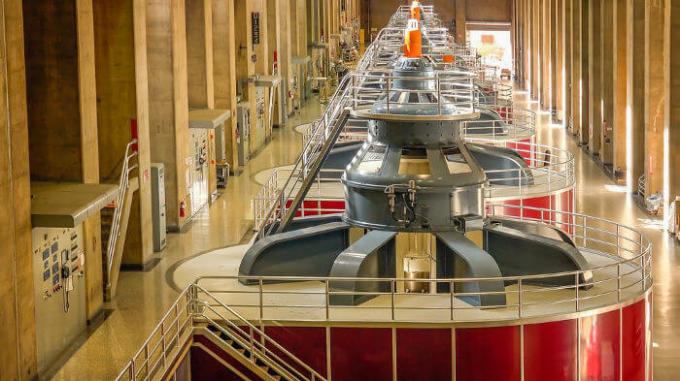When we study the heat transfer processes that take place in two bodies of different temperatures, we are doing a qualitative study of the heat transfer that can occur by conduction, irradiation and convection. However, when we do this type of study, we are not concerned with determining the value of the amount of heat that is transferred from one body to another. We will then learn how to calculate the amount of heat involved in the conduction and irradiation processes.
Driving

Heat flow between two bodies
Let's consider two bodies with different temperatures T1 and T2, being T2>T1. If we unite these two bodies with a metallic bar of uniform section A and length L, the heat conduction of the larger body will occur. temperature for the lowest temperature body, determining that ΔQ is the amount of heat that passes through the bar in a given range of time Δt. The quotient between the amount of heat and the time interval is called heat flow, which is represented by the Greek letter fi (Φ) and mathematically can be written as follows:

If the metal bar that connects the two bodies is surrounded by an insulator, it is verified that after a certain time this bar reaches the situation called steady state, which is characterized by having the same heat flux at any point on the bar. As a result of this fact, the bar reaches a temperature that is constant throughout the bar, and does not change with time.
Experimentally it is possible to verify that the heat flux is:
• Directly proportional to the area of the section of the bar that joins the two bodies;
• Directly proportional to the temperature difference between the two bodies;
• Inversely proportional to the length of the bar joining the bodies.
Joining these three checks and introducing a proportionality constant, we can write the following mathematical equation:

Where K is a constant characteristic of the material that makes up the bar and is called thermal conductivity. The greater the value of this constant, the greater the heat flow that the bar conducts.
Radiation
We know that heat transfer by conduction and convection requires the presence of a material medium for it to happen. With the radiation process, the opposite happens, that is, this process does not need a means for the heat transfer between two bodies occurs, as, for example, heat transfers between the Sun and Earth.
Generally speaking, when a glass receives a certain amount of radiant energy, for example, radiation from the sun, the body absorbs some of this radiation and the rest of it is reflected. We know that dark bodies have the ability to absorb more radiant energy than light bodies.
Consider a body whose outer surface has area A, and which is emitting through that area a total radiation of power P, which is the energy radiated per unit of time over all surface. The following mathematical relationship is called radiance or emissive power (R) of a body:
Do not stop now... There's more after the advertising ;)
R = P/A
And its unit in the International System of Units is W/m2.
However, in the middle of the 20th century, Austrian scientists J. Stefan and L. Boltzmann came, experimentally, to the conclusion that the radiance of a body is proportional to the fourth power of its temperature in Kelvin, that is, R = σT4. Where σ is called the Stefan-Boltzmann constant and holds at SI σ = 5.67 x 10-8W/m2K4. This has been verified for a real body, that is, bodies that fully absorb or reflect all radiation. When the body is not real, the equation described by Stefan-Baltzmann is added by a constant called emissivity, thus: R = еσT4. This is Stefan-Boltzmann's law and through it we can calculate the radiance of any body when we know its temperature and its emissivity.
By MARCO Aurélio da Silva
Brazil School Team
Thermology - Physics - Brazil School
Would you like to reference this text in a school or academic work? Look:
SANTOS, Marco Aurélio da Silva. "Quantitative study of heat transfer"; Brazil School. Available in: https://brasilescola.uol.com.br/fisica/estudo-quantitativo-transferencia-calor.htm. Accessed on June 27, 2021.


